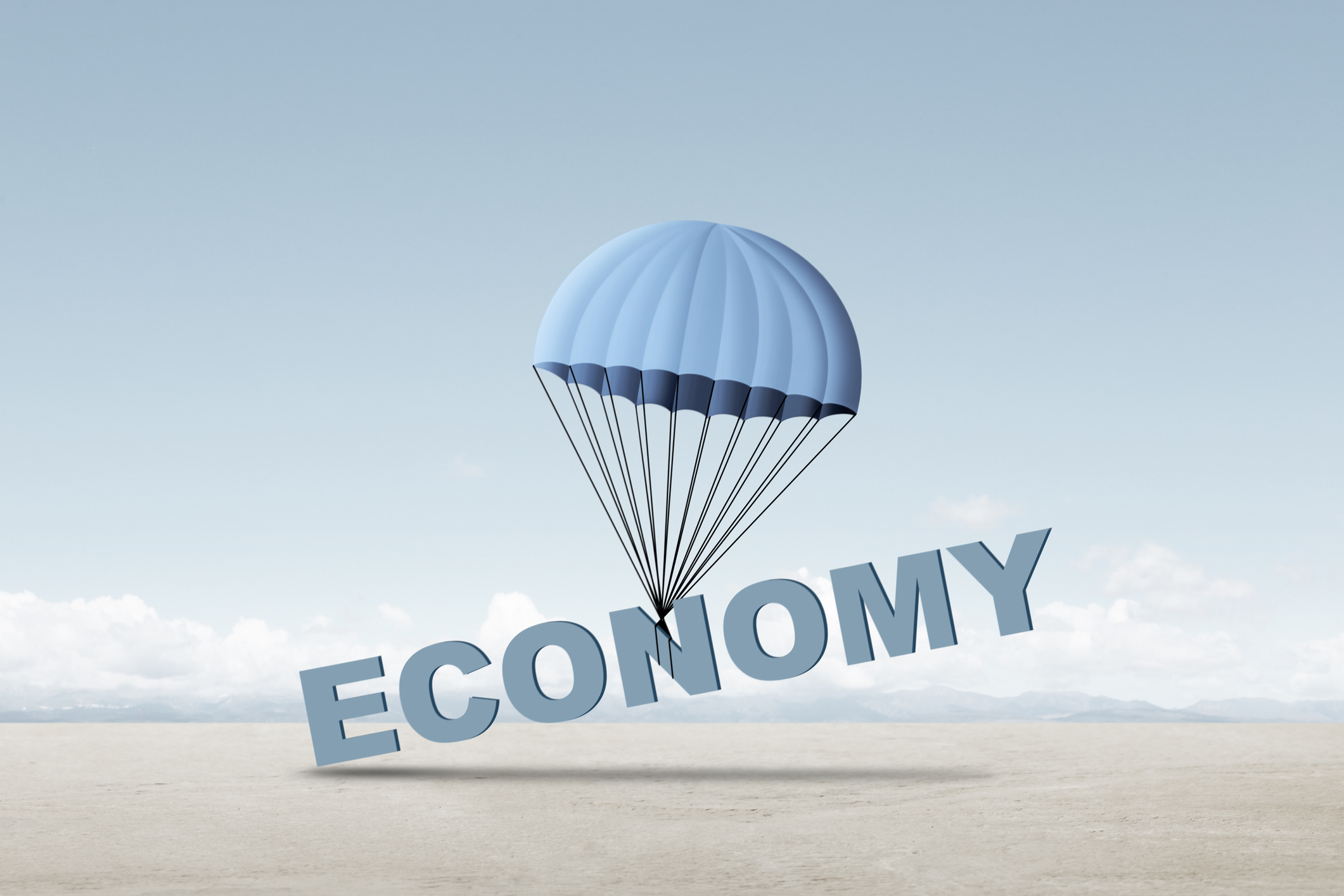What Is a Soft Landing?
A soft landing starts with the Fed and is achieved if the central bank brings inflation down without pushing the economy into a recession.


With inflation slowly returning to normal and the economy remaining strong, there's been talk that the Federal Reserve might have managed to pull off that seemingly impossible of feats: The storied soft landing.
But what exactly does that mean?
We can explain it with a metaphor. In Goldilocks and the Three Bears, the namesake of the story invites herself into the bears' home and looks for that perfect porridge. Not too hot, not too cold. But just right.
From just $107.88 $24.99 for Kiplinger Personal Finance
Become a smarter, better informed investor. Subscribe from just $107.88 $24.99, plus get up to 4 Special Issues

Sign up for Kiplinger’s Free Newsletters
Profit and prosper with the best of expert advice on investing, taxes, retirement, personal finance and more - straight to your e-mail.
Profit and prosper with the best of expert advice - straight to your e-mail.
That's the essence of a soft landing. Now, let's dig into the details. Are we looking at a soft landing scenario right now? And if so, how did we get here?
A soft landing starts with the Fed
For those unfamiliar with how the Federal Reserve works, it has a dual mandate. Specifically, the central bank is charged with keeping prices stable while also maintaining full employment.
That's not a particularly easy balancing act, as policies that keep prices stable and inflation in check – higher interest rates, tighter lending standards on banks, etc. – tend to be the same policies that slow down the economy and push unemployment higher. Policies that tend to boost employment, such as low interest rates and looser credit standards, also tend to ignite inflation.
When the Fed is concerned about inflation, it takes tightening measures to moderate the pace of economic growth. But they have to be careful. If the Fed hikes rates too aggressively, it risks pushing the economy into a bona fide recession – or what we might call a hard landing.
Ideally, the Fed wants to raise interest rates just enough to slow growth without killing it, reining in inflation in the process.
Is the U.S. going to have a soft landing?
The Fed often errs by focusing a little too hard on one of its two mandates while ignoring the other.
Let's go back to the central bank's response to the COVID-19 pandemic. Faced with a collapse in demand due to lockdowns, the Fed's concern was ensuring that employment didn't collapse worse than it already had. So, Federal Reserve Chair Jerome Powell and his associates went "all in" on stimulus measures, dropping the targeted federal funds rate to zero and launching the largest quantitative easing program in history. The Fed injected about $5 trillion into the economy, primarily via bond purchases.
The Fed's actions, along with stimulus checks from the federal government, helped to stabilize employment. While it was uneven and parts of the economy struggled, large swaths of the country enjoyed a boom.
Unfortunately, the central bank's loose policy coupled with supply disruptions also contributed to the biggest spike in inflation in over 40 years.
This forced the Fed to aggressively pivot to price stability. With inflation topping out at over 9% in June 2022, the Fed was willing to risk overshooting to a degree by raising the targeted Fed funds rate from 0% to the current range of 5.25% - 5.5%, a 23-year high.
The Fed's actions triggered several traditional recession indicators. The yield curve inverted, meaning short-term interest rates were higher than long-term interest rates. A yield curve inversion has preceded every recession since World War II and has long been considered a reliable indicator. For what it's worth, the yield curve is still inverted.
As mortgage rates rose, existing home sales plummeted. And the commercial real estate market – and the banks that lend to it – have looked extraordinarily wobbly for the past two years, seeming to threaten a collapse that just never quite seems to materialize.
And yet...
Unemployment remains near historic lows at just 3.7%. To put that in perspective, economists have long considered an unemployment rate of 4% to 5% to be "full employment," as there will always be some segment of the labor force between jobs. The jobs market is about as far from a hard landing as you can get.
Gross domestic product (GDP) also continues to grow at a nice clip. The third and fourth quarters of 2023 saw the economy grow at 4.9% and 3.2%, respectively. The Atlanta Fed's GDPNow forecasting tool estimates that GDP for the first quarter of 2024 will be a little over 3%.
Of course, all of this could easily turn on a dime in the event the commercial real estate crisis or some other calamity eventually materializes.
But for the moment, it does appear that a soft landing is the most likely scenario for the U.S. this year.
Related content
Profit and prosper with the best of Kiplinger's advice on investing, taxes, retirement, personal finance and much more. Delivered daily. Enter your email in the box and click Sign Me Up.

Charles Lewis Sizemore, CFA is the Chief Investment Officer of Sizemore Capital Management LLC, a registered investment advisor based in Dallas, Texas, where he specializes in dividend-focused portfolios and in building alternative allocations with minimal correlation to the stock market.
-
 Holiday Tax Scams: 'Tis the Season to be Wary
Holiday Tax Scams: 'Tis the Season to be WaryTax Scams Navigating tax tricks of the holiday season may be daunting, but don't let that destroy your festive spirit
-
 Metro by T-Mobile Is Giving Away This Samsung Galaxy A16: Which Plans Are Eligible?
Metro by T-Mobile Is Giving Away This Samsung Galaxy A16: Which Plans Are Eligible?Metro by T-Mobile is offering free Samsung Galaxy A16 phones on eligible plans right now. Here’s how the deal works.
-
 I Drive and Collect Classic Cars: Here’s How I Got Started
I Drive and Collect Classic Cars: Here’s How I Got StartedAre classic cars a hobby or an investment strategy — or both? Either way, the vintage car scene is much cooler and more affordable than you think.
-
 The $183,000 RMD Shock: Why Roth Conversions in Your 70s Can Be Risky
The $183,000 RMD Shock: Why Roth Conversions in Your 70s Can Be RiskyConverting retirement funds to a Roth is a smart strategy for many, but the older you are, the less time you have to recover the tax bite from the conversion.
-
 A Financial Pro Breaks Retirement Planning Into 5 Manageable Pieces
A Financial Pro Breaks Retirement Planning Into 5 Manageable PiecesThis retirement plan focuses on five key areas — income generation, tax management, asset withdrawals, planning for big expenses and health care, and legacy.
-
 4 Financial To-Dos to Finish 2025 Strong and Start 2026 on Solid Ground
4 Financial To-Dos to Finish 2025 Strong and Start 2026 on Solid GroundDon't overlook these important year-end check-ins. Missed opportunities and avoidable mistakes could end up costing you if you're not paying attention.
-
 Nasdaq Leads as Tech Stages Late-Week Comeback: Stock Market Today
Nasdaq Leads as Tech Stages Late-Week Comeback: Stock Market TodayOracle stock boosted the tech sector on Friday after the company became co-owner of TikTok's U.S. operations.
-
 Are You Putting Yourself Last? The Cost Could Be Your Retirement Security
Are You Putting Yourself Last? The Cost Could Be Your Retirement SecurityIf you're part of the sandwich generation, it's critical that you don't let the needs of your aging parents come at the expense of your future.
-
 I'm an Insurance Pro: It's Time to Prepare for Natural Disasters Like They Could Happen to You
I'm an Insurance Pro: It's Time to Prepare for Natural Disasters Like They Could Happen to YouYou can no longer have the mindset that "that won't happen here." Because it absolutely could. As we head into 2026, consider making a disaster plan.
-
 The Future of Philanthropy Is Female: How Women Will Lead a New Era in Charitable Giving
The Future of Philanthropy Is Female: How Women Will Lead a New Era in Charitable GivingWomen will soon be in charge of trillions in charitable capital, through divorce, inheritance and their own investments. Here's how to use your share for good.
-
 Cooler Inflation Supports a Relief Rally: Stock Market Today
Cooler Inflation Supports a Relief Rally: Stock Market TodayInvestors, traders and speculators welcome much-better-than-hoped-for core CPI data on top of optimism-renewing AI earnings.